One of the biggest features of a brick-and-mortar store is a store assistant. A smiling, shopping assistant could answer your queries, walk you through the different products in the store, help you pick out the perfect product as per your requirement and also take you through the check out process. Cut to the world of online shopping, where the process is becoming more simplified and automated, we do miss that personal touch of service.
Now, imagine that you have someone (or something) helping you out on the other side and performing the role of a store assistant while you’re shopping online!
Chatbots have become the newest ecommerce game changer that are filling the “support” gap and have evolved as smart assistants of many a marketplace. These round-the-clock bots use AI to draw customer preferences and shopping paths and provide exclusive shopping experience. In today’s era of conversational commerce where businesses are connecting with their customers through messaging, chatbots in marketplaces have brought in revolutionary improvements.
But why are chatbots gradually becoming an absolute necessity for marketplaces? We’re here to answer that in this blog. But for those who aren’t much acquainted with chatbots, let’s begin with the basics.
What are chatbots?
Have you ever seen a small messaging popup on one of the corners of a website, prompting you to reply with what you’re looking for or querying if you need any help? Yes, that’s a chatbot.
A chatbot is basically a computer program designed to infer and simulate human conversation over the internet. It uses artificial intelligence (AI) and natural language processing (NLP) to process user’s queries and simultaneous remarks and provide responses.
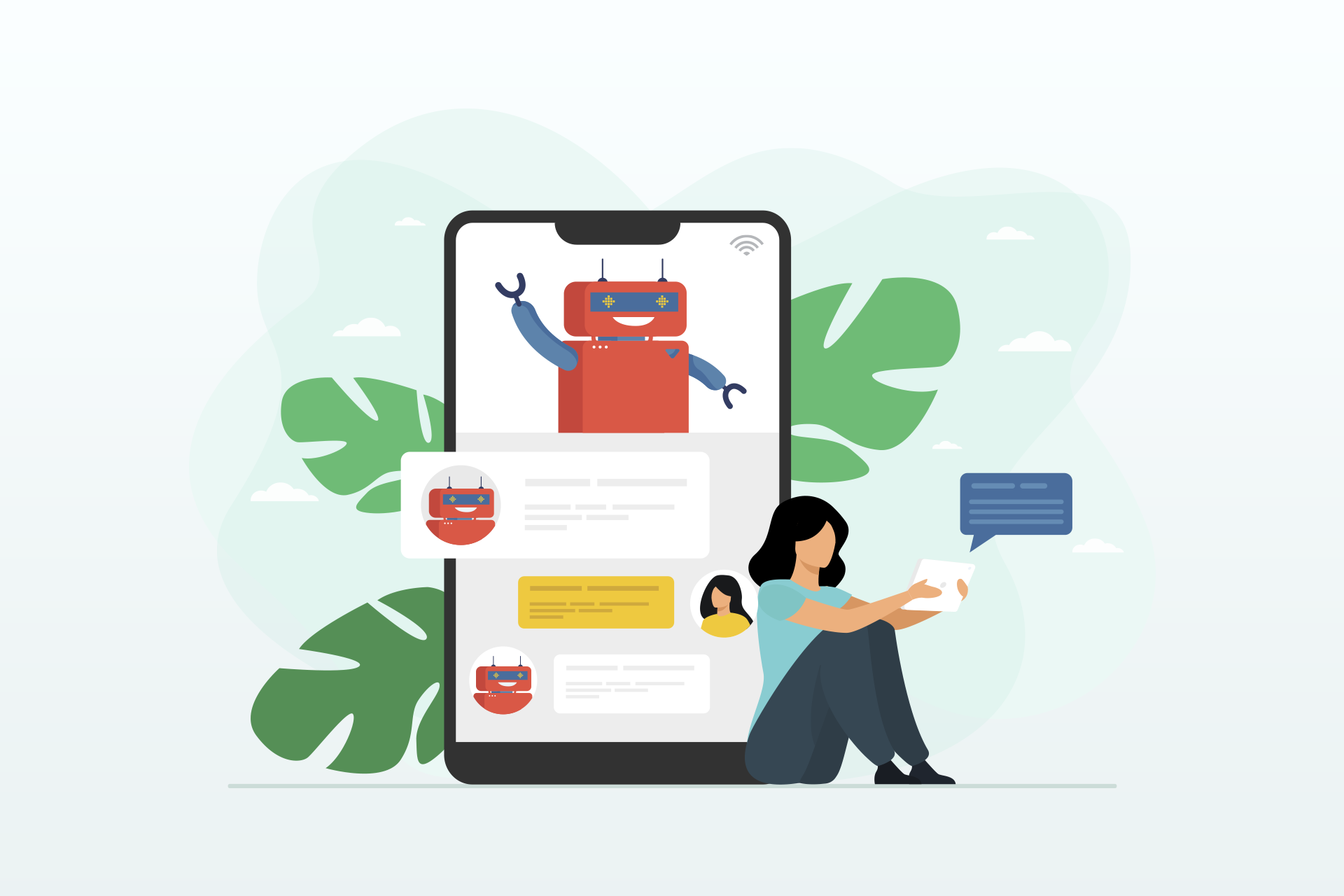 While chatbots could be designed to do a lot of tasks, in the case of ecommerce, they are mainly programmed to provide automated customer support and guide customers through their shopping and checkout process.
While chatbots could be designed to do a lot of tasks, in the case of ecommerce, they are mainly programmed to provide automated customer support and guide customers through their shopping and checkout process.
Chatbots are becoming increasingly popular due to their efficiency. According to a survey made by Capgemini, 23 out of top 100 consumer products and retail organizations have deployed chat assistants. The global chatbot market is estimated to be worth $10.5 billion by 2026.
Types of chatbots
Before you think of integrating a chatbot into your business, you need to know how chatbots work. Once you understand the various types of chatbots and their mechanism, you’ll be able to choose the relevant chatbot for your marketplace.
There are mainly 3 types of chatbots for ecommerce platforms:
Rule-based chatbots
Rule-based chatbots provide answers to predefined questions when prompted by users. These chatbots are function-based on a set of rules or prompts and can only respond to those. Since rule-based chatbots cannot interpret the user’s language, they are pretty restrictive.
Rule-based chatbots are suitable if you expect your customers to ask simple questions or choose from the set of options that you provide. A classic example of this kind is Facebook’s chatbot on its Messenger platform. It performs automated customer support for businesses on Facebook.
AI-driven chatbots
This is the most effective and widely used type of chatbots used in businesses. Utilizing natural language processing (NLP) technologies, AI-driven chatbots mimic human speech patterns and behavior to understand the user’s intent. Through progressive machine learning, these chatbots use AI to respond to user conversations in order to meet their requirements.
AI-driven chatbots are more effective for handling complex shopping processes like product recommendations and completing transactions. It is almost like a live support agent that can help your customer through his course of shopping from your platform. Sephora’s chatbot works on Kik messenger and has been able to capture Gen-Z customers through its intelligent response with relevant photos, tutorials and product recommendations.
Hybrid chatbots
As the name suggests, hybrid chatbots combine the features of both rule-based and AI-driven chatbots. A hybrid chatbot works on flow-based as well as AI-generated paths. These chatbots are implemented where there is a need for AI interpretation for user’s preferences followed by a rule-based consequential task. Therefore, this type of chatbots are especially beneficial for complex customer support, medical diagnosis, booking and appointments, etc. Snaptravel’s chatbot can effectively help customers search and book accommodations and flights – all by itself and in just 16 minutes!
Hybrid chatbots also refer to those chatbots that involve human agent intervention. Such chatbots analyze conversations between a support agent and user and learn the process for future support. In cases where the bot can no longer assist the user or requires human intervention, it redirects to a suitable live support agent.
Why should you invest in a chatbot?
Let’s be honest, you’re already interested in chatbots, aren’t you? Ecommerce chatbots can improve your website’s functionality and provide a better shopping experience, when implemented properly. Here’s how effective chatbots benefit your marketplace:
Provides 24×7 active support
Think of a support employee who works round the clock, doesn’t take coffee breaks and is replete with a vast database readily resolving customer queries and issues. You’d have a tough time finding a human agent who could fulfill such fantasies! But chatbots can step up to the plate and become your next super employee. They won’t feel tired of even repeating the same answer. AI-enabled chatbots can even study user mannerism and provide resolutions with different eccentricities!
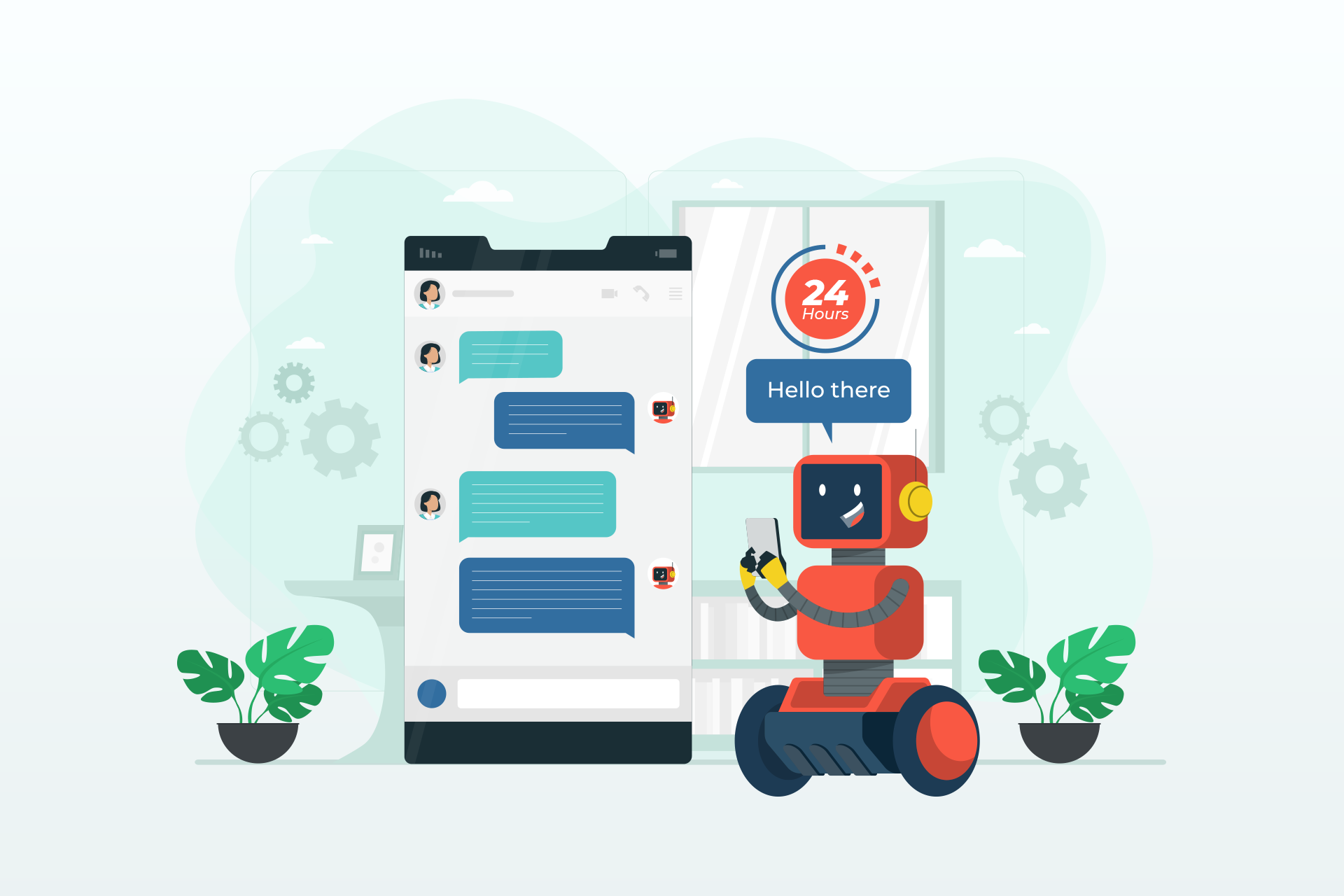 Moreover, customers hate to wait and want an immediate response when they’re stuck with an issue. In a survey of 3200 customers, 12% expected a response within just 15 minutes from their query. Now, unless you do have a round the clock support team, responses could take hours for queries that pour in beyond working hours of your team. Chatbots can solve this problem by significantly reducing the wait time to seconds thereby providing better customer satisfaction. Plus, it eases the load on your support team by letting your support agents deal with more complex queries. Slush’s chatbot handles about 64% of all customer queries, which is a big load-reliever for any company.
Moreover, customers hate to wait and want an immediate response when they’re stuck with an issue. In a survey of 3200 customers, 12% expected a response within just 15 minutes from their query. Now, unless you do have a round the clock support team, responses could take hours for queries that pour in beyond working hours of your team. Chatbots can solve this problem by significantly reducing the wait time to seconds thereby providing better customer satisfaction. Plus, it eases the load on your support team by letting your support agents deal with more complex queries. Slush’s chatbot handles about 64% of all customer queries, which is a big load-reliever for any company.
Helps in generating more leads
Every visitor visiting your website is a potential buyer and requires to be plunged into your sales funnel. AI-driven chatbots are a powerful conversational tool for any business. It can effectively engage customers in interaction and collect data about customer behavior, preferences, sentiment, etc. These data could be further used for targeted marketing and personalized recommendations.
Chatbots are one of the best tools to promote lead magnets that can lead to fruitful conversions. Lead magnets can include exclusive contents like articles/blogs, informative videos or styling tips that become available to the potential lead after he/she signs up or provides his/her email-address. Via interactive conversation, chatbots can ask for the user’s email details so as to send forth the content, thereby capturing valuable information for further email marketing strategies.
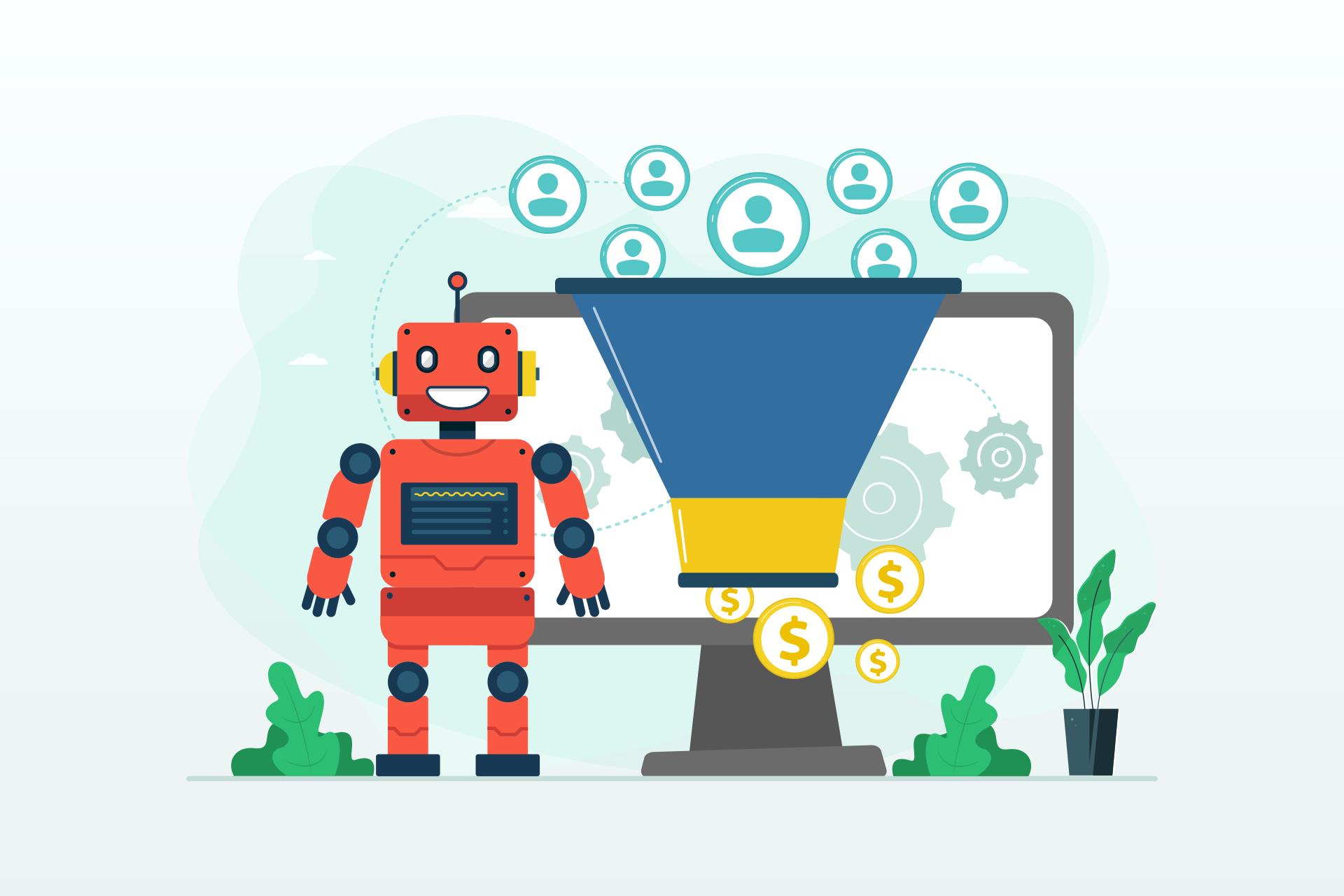 Static online forms have a high rate of abandonment with 81% of people leaving out online forms midway after they start filling them. Chatbots can break long forms into several steps and help users fill them through interactive questionnaires or quizzes. This lets the user willingly give out information without filling up long forms, thereby improving leads count. Toyota’s Hong Kong branch had implemented Sanuker’s chatbot ‘Stella’ for its Toyota Sienta campaign which collected the customers’ preferences through pleasant conversation and quizzes. Later, it connected to relevant Toyota sales teams available through live chat. This chatbot increased Toyota’s CTR from 0.6% to almost 10%!
Static online forms have a high rate of abandonment with 81% of people leaving out online forms midway after they start filling them. Chatbots can break long forms into several steps and help users fill them through interactive questionnaires or quizzes. This lets the user willingly give out information without filling up long forms, thereby improving leads count. Toyota’s Hong Kong branch had implemented Sanuker’s chatbot ‘Stella’ for its Toyota Sienta campaign which collected the customers’ preferences through pleasant conversation and quizzes. Later, it connected to relevant Toyota sales teams available through live chat. This chatbot increased Toyota’s CTR from 0.6% to almost 10%!
Drives more sales
A tenacious shop assistant not only responds to customers’ queries but also ensures smooth culmination of sales. Similarly, an efficient chatbot can work on various aspects of a sales process in order to complete the process. In fact, sales automation is one of the biggest reasons why businesses are relying on smart chatbots.
When customers get a personalized shopping experience, they’re more likely to shop from that brand. A research made in 2017 by Epsilon indicates that 80% of customers are more likely to shop from businesses offering personalized experience. In that light, custom-based offers and product recommendations play an important role in compelling users to buy from you. Amazon generates 35% of its revenue through its recommendation engine!
Much like a personal shopper, chatbots can suggest relevant products or services from your inventory to users when prompted for their interests, issues or requirements. Some bots can be programmed to even custom match or search for mix-match items in order to create a perfect product for the customers. Nike’s StyleBot, in general, provides amazing product suggestions to customers based on their preferences. However, during its Nike AirMax Day, it utilized its StyleBot to let customers create designs for their very own custom sneakers and became a huge hit. It increased its average CTR to 12.5 times and its conversion rate by 4 times!
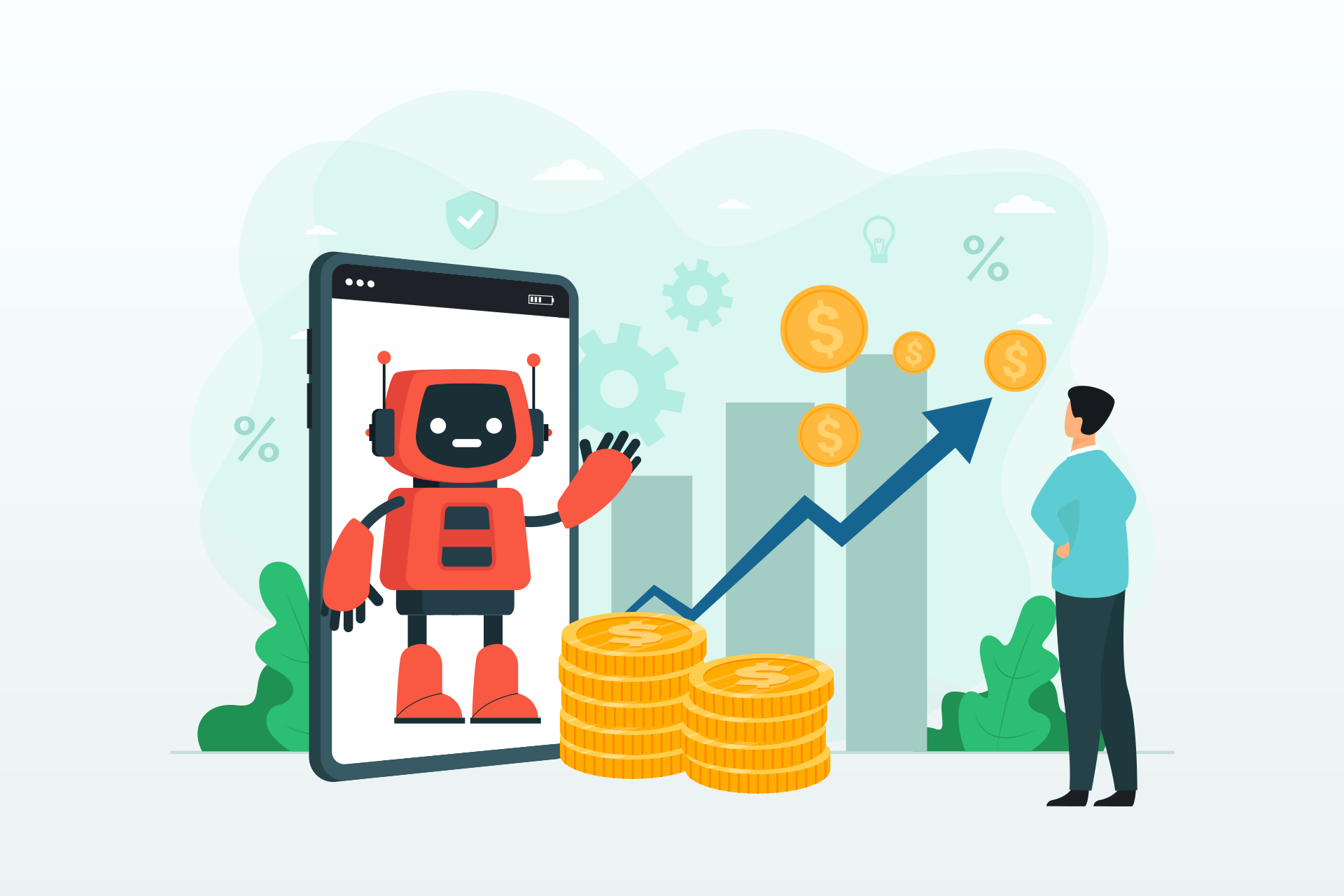 With 88% of customers abandoning their carts without completing the online purchase, it is all the more important to deploy all means to recover those customers. Providing tailor-made deals and offers is proven to improve customer retention. By engaging customers in their persuasive conversation and providing alluring deals, chatbots can help you recover those abandoned carts. A lot of times, the bot asks if the customer wants to proceed with their purchase or empty the cart. This gives the customer a silent push to go back to the cart and complete the transaction.
With 88% of customers abandoning their carts without completing the online purchase, it is all the more important to deploy all means to recover those customers. Providing tailor-made deals and offers is proven to improve customer retention. By engaging customers in their persuasive conversation and providing alluring deals, chatbots can help you recover those abandoned carts. A lot of times, the bot asks if the customer wants to proceed with their purchase or empty the cart. This gives the customer a silent push to go back to the cart and complete the transaction.
And not just that, chatbots can also lead your customer towards the checkout process. Through its conversational flow, chatbots can, after affirmation from the customer, direct your customers to the third party payment gateway in order to complete the purchase. In 2016, Domino’s introduced Dom, the Pizza Bot, which works with Facebook Messenger, Whatsapp, Slack and a few other platforms. It helps customers order their favorite pizza along with their preferred customization directly from the messenger. Without even downloading the app, the bot lets you complete your transaction.
Engages in post-sales service
In order to build a long lasting relationship with your customers, post-sales support is pretty crucial. Post-sales support not only turns your customers loyal towards you for further purchases but also makes them advocate your brand. 95% of customers agree with the fact that good customer service is important for brand loyalty. But did you know that your chatbot could also help you in customer retention through after-sales services?
One of the most common post-sales support requests are return, exchange, refund and shipment tracking queries. Since returns and refunds or exchanges usually fall under pre-defined policies of the company or seller, it becomes quite repetitive and monotonous for support agents to deal with these requests. Chatbots can easily process these customer requests in no time, thereby relieving customer support agents of these minor requests. In case of more complex issues regarding return/exchange or refunds, chatbots can also connect the customer with live support agents, turning the whole process into a seamless and speedy one.
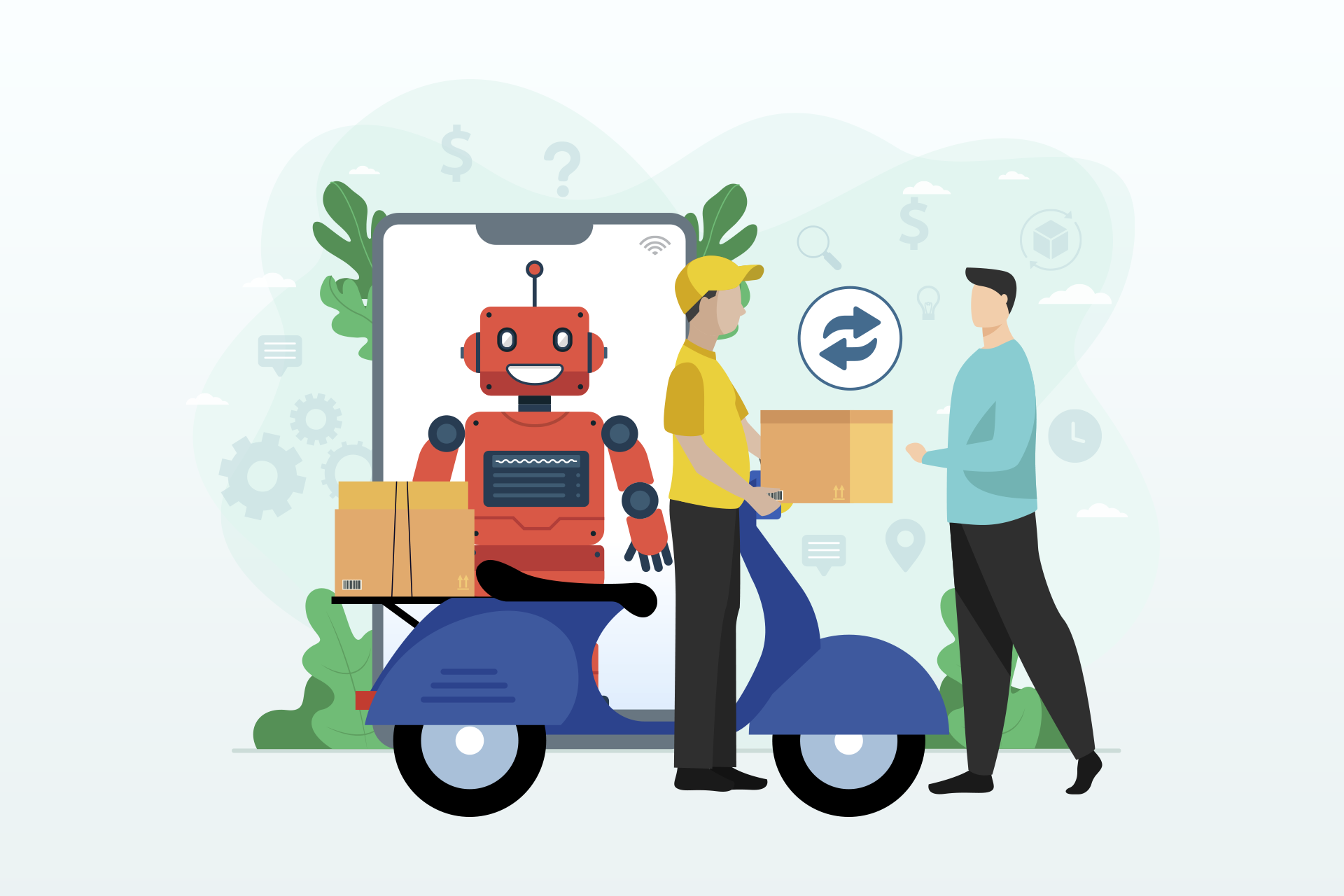 Similarly, these smart AI agents can help your customers track their package without getting into the tedious task of entering tracking IDs or browsing the order tracking page. They pull data from your logistics provider and store them in the backend so that the tracking information is readily available when prompted.
Similarly, these smart AI agents can help your customers track their package without getting into the tedious task of entering tracking IDs or browsing the order tracking page. They pull data from your logistics provider and store them in the backend so that the tracking information is readily available when prompted.
Chatbots can also be programmed to re-engage past customers to share their experience or review regarding their purchase. Mostly through messengers or even emails, chatbots can get in touch with customers who have made a recent purchase from your website and collect their feedback. You can later analyze these feedbacks to improve customer experience, provide personalized deals, and send upcoming sales or product launch alerts.
Reduces resource costs
The global customer service market was valued at USD 10.6 billion in 2022 and is expected to grow at an annual CAGR of 15.4 from 2023 to 2030. More and more companies are now focusing on quality customer service thereby investing more on the customer support segment. However, maintaining a sound customer support team is quite an expensive affair for any business. An average payout for a customer service agent in the US is around $38,008 per year. Additionally, there are costs for recruiting, onboarding and training an agent that the company bears when it keeps a customer support team of its own. Even if you outsource a call center for your customer support, it may cost you about $2600 – $3400 per agent per month.
On the other hand, chatbots are way cheaper than maintaining a full fledged support team. Most software companies charge from $15,000 to $31,000 to build a customized chatbot as per your requirements. An AI-driven chatbot with NLP and machine learning features can cost you about $20,000 – $40,000. Building one from scratch can cost from $5000 to ev en $1,50,000 based on how you develop it.
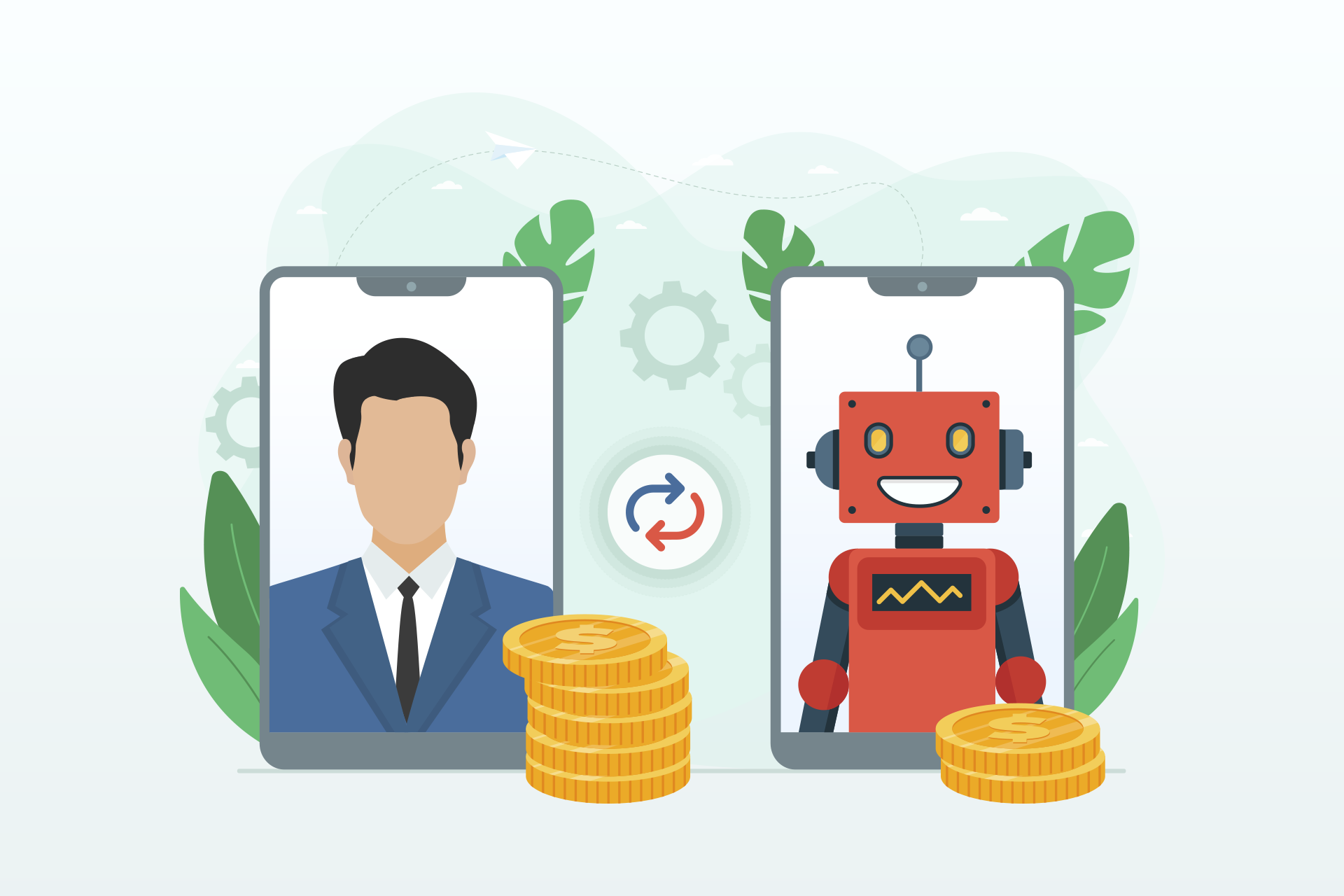 Now, you might ask, how on earth is that cheaper? Well, these are mostly one-time development costs. Of course, you might also require a subscription fee which might cost from $100 to even $5000 per month when your chatbot is developed by Saas. However, the catch is that a single chatbot can accomplish the task of hundreds of support agents at one time. Not just support, but chatbots can also help in customer retention and targeted marketing – something that a customer support agent won’t be able to accomplish. Plus, they work 24×7, which no support agent, whether in-house or outsourced, will do. Moreover, when you build a support team of your own or even outsource them, you cannot do with just one or two support agents. Therefore, the cumulative costs would definitely exceed that of getting a chatbot. So, when you do the math, you’ll find that getting a chatbot is way more economical than hiring a support team.
Now, you might ask, how on earth is that cheaper? Well, these are mostly one-time development costs. Of course, you might also require a subscription fee which might cost from $100 to even $5000 per month when your chatbot is developed by Saas. However, the catch is that a single chatbot can accomplish the task of hundreds of support agents at one time. Not just support, but chatbots can also help in customer retention and targeted marketing – something that a customer support agent won’t be able to accomplish. Plus, they work 24×7, which no support agent, whether in-house or outsourced, will do. Moreover, when you build a support team of your own or even outsource them, you cannot do with just one or two support agents. Therefore, the cumulative costs would definitely exceed that of getting a chatbot. So, when you do the math, you’ll find that getting a chatbot is way more economical than hiring a support team.
Of course, chatbots cannot completely overrun human support agents. During any kind of problem solving, there may arise situations where human intervention becomes necessary. However, chatbots can significantly reduce the cost of human resources by allowing you to maintain a smaller support team dedicated to more complex issues.
77% of online businesses have already implemented chatbots for support. Furthermore, 60% of businesses are considering conversational bots for after-sales support. So, you know, chatbots are the next big thing in the customer service market. These smart, conversational bots are multifunctional, reliable and save you from human error. Since AI is the future of ecommerce, it’s high time you start considering chatbots as your next customer support team. Just find yourself a good software company that offers the most suitable chatbot service or build yourself a custom one. With chatbots, you’ll definitely see your marketplace perform better, earn more revenue and provide an improved shopping experience.


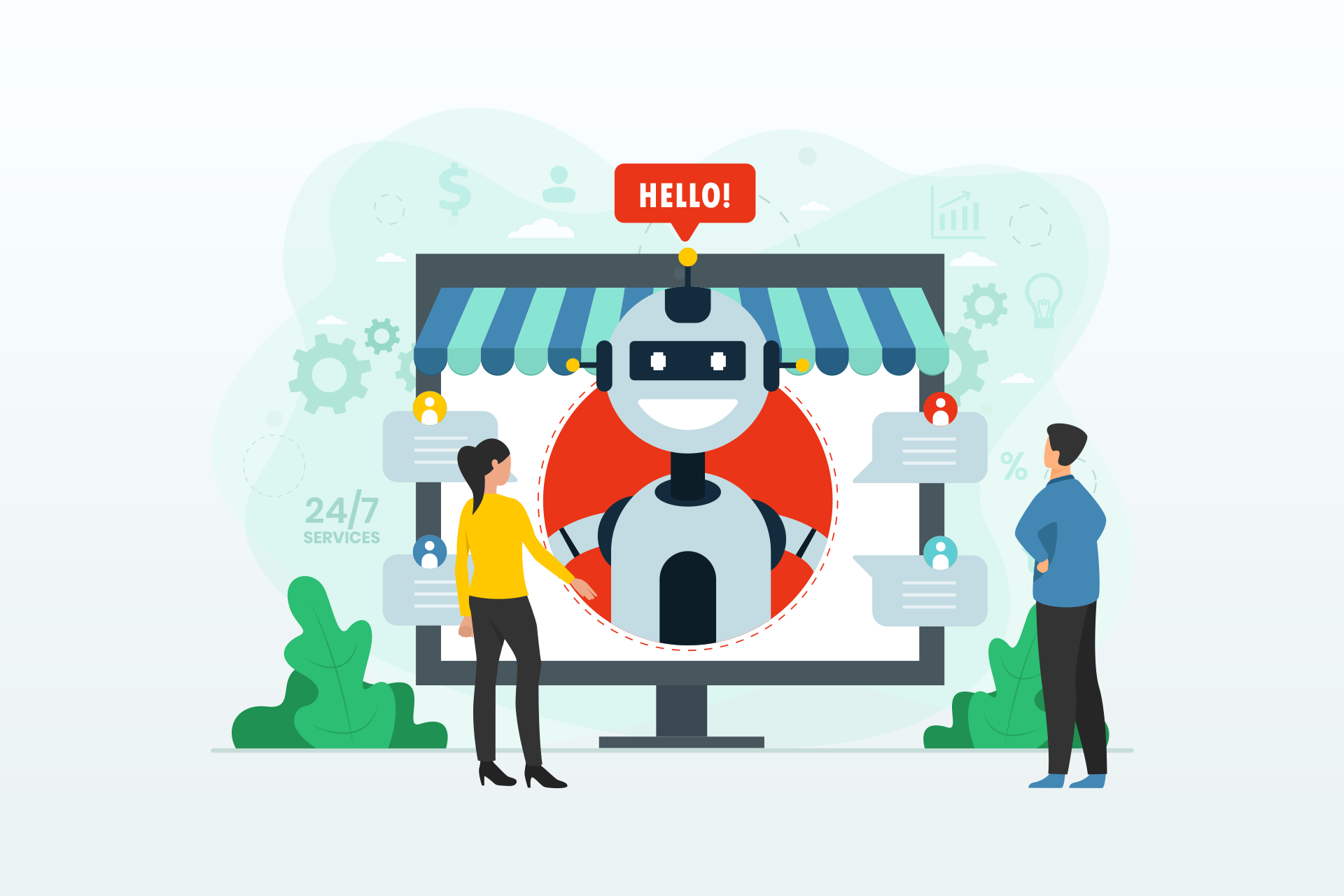
Leave a Reply
You must belogged in to post a comment.